Now that you’ve been introduced to the overall concept of Getting Things Done with the video in my previous blog post, let me show you the secret weapon of chaos warriors who want to follow that methodology with a digital tool they can truly own.
Your secret weapon: “Getting Things GNOME”
“Getting Things GNOME” is a native GNOME desktop application that is entirely free and open-source (licensed under the GPL) and runs locally on your computer.
Here’s how it looks like on my computer (and yes, I do have over 600 actionable tasks at all times lately):
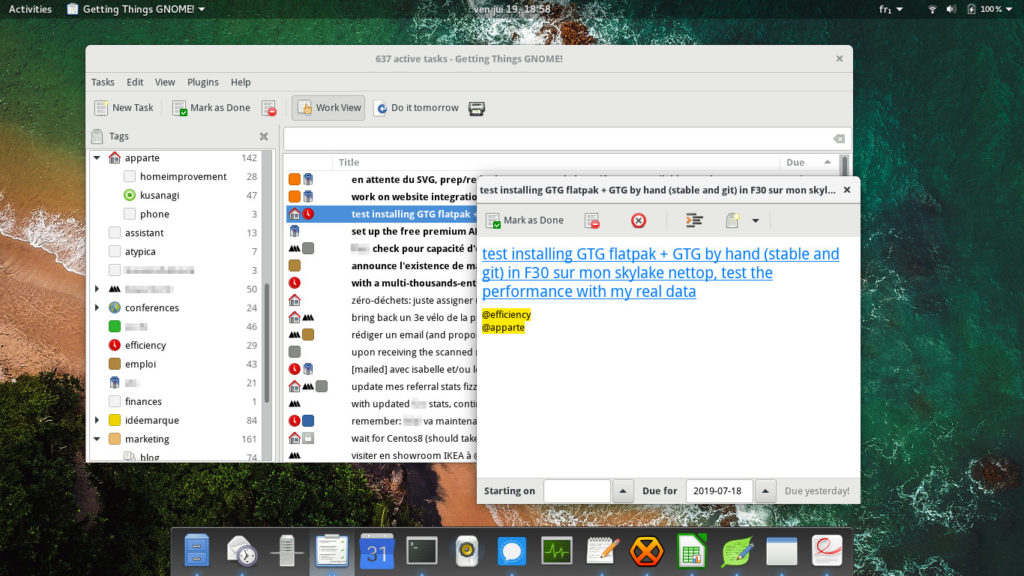
Getting Things GNOME is one of the most well-made productivity apps of the decade. It has:
- A mature codebase with almost a decade of work that has been put into it
- A nice GTK interface (GTK2 in the stable version, GTK3 in the development version), with a flexible free-form text editor for handling inline @tags, and extended descriptions/notes below the title
- The ability to quickly defer tasks (ex: “do it tomorrow”, “do it next week”, “do it next month”, etc.)
- Natural language parsing (you can tag things while you type the title, and you can use dates such as “Tomorrow”, “Thursday” in addition to the standard “YYYY-MM-DD”)
- “Work view” mode for displaying only “actionable” tasks so you can focus on your work
- The notion of sub-tasks and dependencies
- Tags, which can also be made hierarchical (ex: “@phone” can be a child of “@work”) and can have colors and icons
- Search and “saved searches”
- Plugins!
- Works offline, owned by you with no restrictions, no licensing B.S., software “by the people for the people”
This is what the Git (development) version of GTG’s UI currently looks like, showing my personal tasks (it needs some improvement, but it’s already impressive):
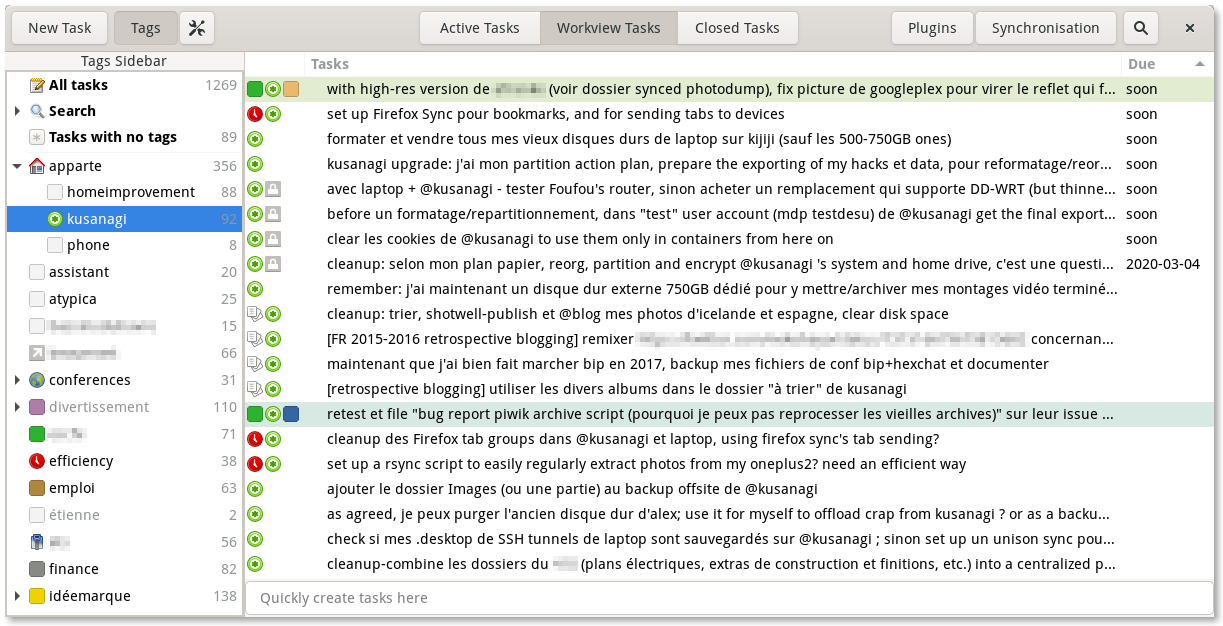
Here are some more (old) screenshots:
Historical context
Unfortunately, the previous maintainers never developed a business model to sustain development, and, after a long period of development hell, abandoned the project as they moved on to get various jobs.
This is understandable and I can’t fault them… however, I still need a working and maintained application that will continue working working throughout the years as our technological landscape evolves (the Linux platform is pretty ruthless on that front). Otherwise, you risk having your Linux distribution suddenly stop packaging the app you dearly depend on.
If anyone was wondering if all Free and Open-Source software can continue as a side-project forever, this is a prime case study. This is what happens when software goes unmaintained.
Meanwhile, in the world of proprietary software and software-as-a-service, countless people are paying a big one-time, monthly or yearly licensing fee to use to-do software applications that they don’t own, and for which they can’t be 110% certain that the software respects their digital rights. Depending on these raises fundamental questions when it’s something as long-lived and all-encompassing as a personal productivity system: Can you trust that cloud service? Or that this proprietary app isn’t profiling what’s going on in your OS, or uploading your data if it sees certain key words? That the licensing fee won’t increase? That the whole thing won’t change when the parent company becomes part of a merger, acquisition or bankruptcy? That the app will keep functioning throughout the years as you upgrade your operating systems, that it will work on more than one or two “authorized” computers?
All these questions are relevant when you’re depending on proprietary software. And when you’re depending on an online/cloud service, you’re always at the mercy of that service eventually shutting down (or being acquired, merged, etc.). There are numerous examples of that happening, including this, this, this, this and that, to name only a few.
This is not The End?

It doesn’t have to be that way.
What if we could bring “GTG” back from the dead, finish the job, and sustain it forever more so that we can all benefit from it?
There are two ways this can be done (which are not mutually exclusive, I might add):
- From the existing userbase, reform a completely new team of software developers that will be willing to come together and “finish the job” to get a new release out of the door. I have obtained administration rights to the GitHub repository so I can, in practice, play “project manager” and help volunteers get on board. We could have a status analysis and brainstorming session to establish a roadmap with the shortest path to releasability, and beyond, and then work together for the months and years to come to accomplish our goals
- Someone with enough freedom and time (it could be me, it could be someone else, it could be multiple people) gets paid to be day-to-day maintainer(s), the one(s) doing the majority of the core “boring” work to get everything back into shape and mentors the part-time contributors who contribute opportunistic (“drive-by”) patches and merge requests.
The two options are viable, but require enough public interest to happen. This is why I’m making a survey, linked below, to evaluate the potential for such an initiative. Are you interested in GTG coming back in full force? Whatever your answer, let me know through this 5 minutes survey (November 24th update: survey is now closed, thanks for participating!). Your input is was very much appreciated:
- It is much more efficient to run this survey (and share results here) than to spend months preparing a campaign only to find out that there is or isn’t enough demand.
- It also lets me raise awareness and hopefully assemble a team of new contributors (because you don’t just make them appear out of thin air); if enough volunteers show up (with a lot of time and passion to share) we can get started without much delay, get together and create momentum.
Help me evaluate how we can bring it back to life, with this 5 minutes survey

The survey can be found here (November 24th update: the survey is now closed, thanks for participating!)
Filling this survey should take 4-6 minutes at most.
Let’s be clear: I’m not doing this for myself (just grabbing a proprietary app package is much easier and would let me move on to MUCH more lucrative opportunities), I would be doing this for the greater public good, because it breaks my heart to think that GTG would die when it’s such a great piece of software.
There is no sane FLOSS native desktop alternative for Linux users, and open-source software should be worth more money than proprietary software, not less: you are getting better value out of it, with an implicit guarantee that the software respects your rights and privacy, and that it will remain available forever as long as there is someone on the planet willing to maintain it.
On the other hand, spending time creating software costs money; the alternative is not caring and pursuing a lucrative career, so the software remains unmaintained and everybody loses. So I need to know that nursing GTG back to health would be worth the effort, that the application would be used by many (not just a handful) of people around the world. I seek “meaningful” work.
Help me determine if this is worth my (or anyone’s) time by filling the survey today, and please share it with those around you, and elsewhere on the interwebs. Thanks!
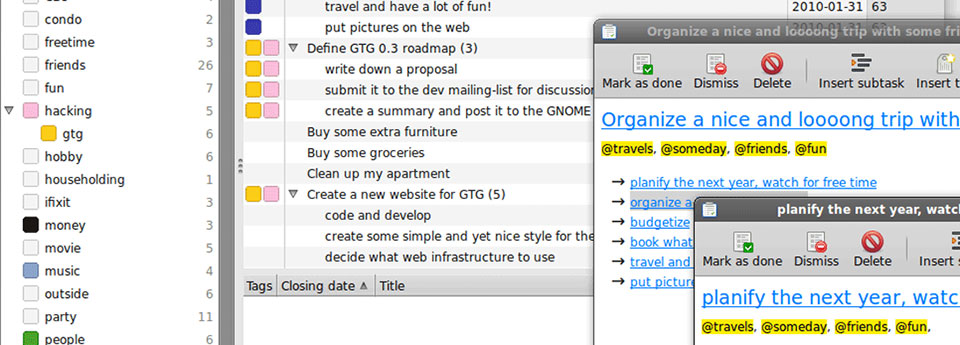
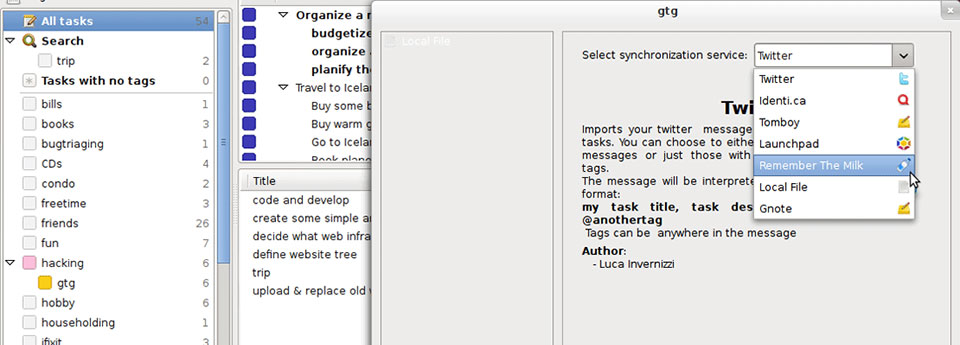

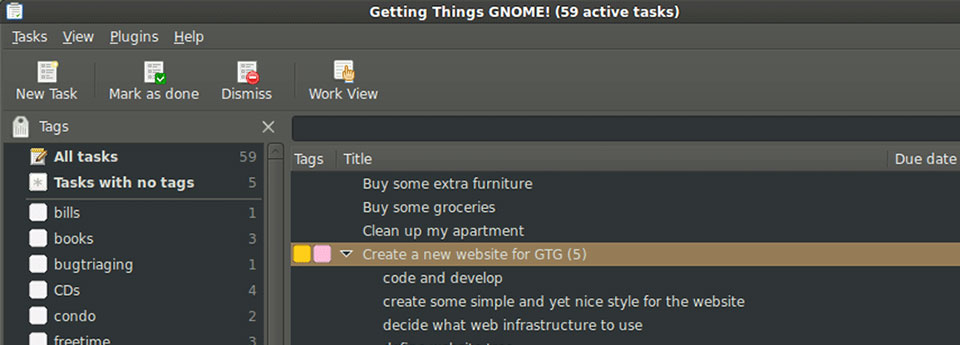
Comments
6 responses to “Survey: making Getting Things GNOME sustainable as a productivity app for public good”
Hi!
I just was filling out the survey, when at the end you say you won’t consider making a mobile app. To be honest, for the vast majority of people such an app is useless without a mobile version. I get that you can not code mobile apps, but why should that be the reasoning to make this potential project useless for most people? The desktop is only used now by a small minority, and mobile and tablet is the primary computing device of today, and even more so in the future.
It seems you want others to help/spend money/code so that you can use GTG further for your own use case. While on the other side, it would be much more important to provide a FLOSS Todo-App for the majority of the people.
I would happily donate, promote, write docs, etc for a project that aims to provide such a FLOSS solution for Todo-management for the mass of people. But not for a desktop only App, for which there are FLOSS alternatives anyway, which are still maintained, just as you were told in the bugzilla. If you want to go big, and bring in other devs anyway, a mobile version is possible, as many other FLOSS apps prove (e.g. Joplin for Note Taking).
But it seems to me, you rule that out to in the end be the one who would benefit from potential donations and not some other coder who could code for mobile. Like i said before, a FLOSS solution for common proprietary use cases like Todo-Management is badly needed; but not for some use case which will not benefit the huge majority of people.
Hi and thanks for letting me know 🙂 I was a bit unclear in that question’s footnote (in particular, it was missing the word “personally” in front of “interested”), so I have added that, and this clarification at the end of the paragraph:
Here’s the thing: this is not about “creating” a useless app, it’s about maintaining an existing one. It’s the most straightforward path forward. There is a huge, huge, HUGE difference between “fixing an existing app” (with a set of known technologies) and “starting a new one from scratch with completely different technologies in addition to maintaining the existing app and needing to build a rock-solid synchronization platform between the two to make a compelling case”.
So this is why I am not personally planning to get into years of development on an alien platform just because “mobile is popular”; it does not solve the immediate problem and involves a ton of risks. And then it competes in a “race to the bottom” against the gazillion existing TODO apps on mobile platforms, in a market where most users (on those mobile platforms) don’t know or care about software freedom…
I’ll be happy to see other people work on a mobile version, including (if the survey indicates that there would be wild demand for this, enough to pay a team of people where some could be focused on the architecture of desktop+mobile), but anyone getting into that must realize it would be opening a whole new can of worms.
At the end of the day I don’t necessarily want to be the one to maintain GTG, I just don’t see other options unless other developers come forward to tackle the challenge. I’d much prefer if it was someone else actually (especially if they can be paid to do so), as long as the desktop version is maintained as a 1st-class citizen, with a well-designed native graphical user interface–not a web app or a commandline/terminal app (if I wanted to use those, there are plenty out there and it’s much easier to use them than to maintain the code myself).
Hi,
I used to use and love GTG back in the day, until it became unusable and ultimately removed from Fedora.
I also had a plan to start working on it, and port it from GTK to QT, which would have multiple benefits, some of which are system tray support and truly multi platform, including mobile.
I gave up on it for 2 reasons: the first one being that I don’t have enough time to dedicate to such project, and the second one is that, while not tailored toward the GTD philosophy, there already are some apps like Carnet (https://github.com/PhieF/CarnetDocumentation/blob/HEAD/README.md) that are good enough for me.
Anyway, I wish you the best of luck resurrecting GTG
dear. i’m a chaos warrior in my every day job. I have tons of parallel actions to manage. After lots of tries, I found freeplanner, and I tailored it easily to match with my task workflow. with icons, personal filters and FULL keyboard control, I m very happy with it. if you are interested I could share my workflow. it is free software, lightweight and soooooo stable. let me know
I’ve been wanting a good GTD app on Linux for a while now. GNOME To Do doesn’t cut it for me, and Getting Things GNOME is too outdated and lacking in features. I enjoy Everdo quite a lot, but it’s sadly not FOSS, so I’ve been planning to write a GTK-based alternative to Everdo at some point in the future. I would certainly be interested in any updates to Getting Things GNOME, though. That screenshot of the development version looks very nice – a much more modern UI!
Helping maintain GTG would certainly be much, much, much easier than starting your own GTK app from scratch. When one thinks of doing something from scratch, there’s always this “How hard can it be?” moment where the complexity and scope is vastly underestimated…